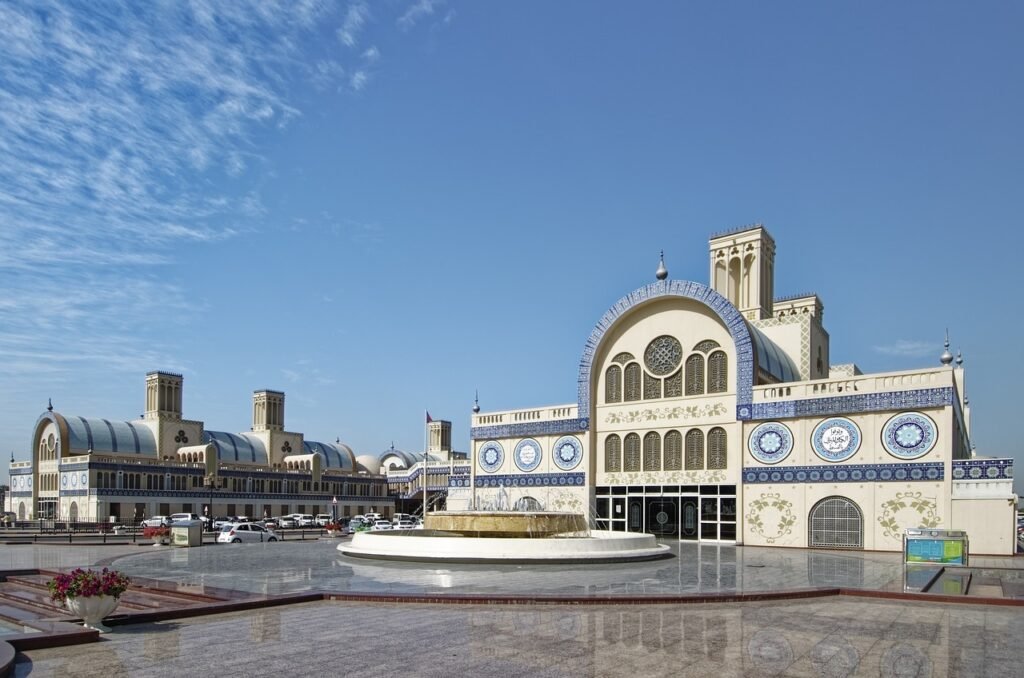
Sharjah, one of the seven emirates of the United Arab Emirates (UAE), boasts a rich and diverse history that spans thousands of years. Here’s an overview of its historical development:
Ancient and Pre-Islamic Periods
- Prehistoric Settlements: Sharjah’s history dates back to the Neolithic period, around 6000 years ago. Archaeological evidence, such as tools and pottery, indicates early human settlements in the area.
- Bronze and Iron Ages: The region saw the development of more sophisticated societies during the Bronze Age (circa 3000 BCE) and Iron Age (circa 1200 BCE). Artifacts from these periods have been found in Mleiha and other parts of Sharjah.
Islamic Era
- Early Islam (7th Century): With the spread of Islam in the Arabian Peninsula in the 7th century, Sharjah became part of the Islamic caliphates. The region was influenced by various Islamic dynasties over the centuries.
- Abbasid and Umayyad Periods: During these periods, Sharjah’s coastal location facilitated trade and cultural exchanges across the Arabian Gulf.
Medieval and Early Modern Periods
- Portuguese Influence (16th Century): The arrival of the Portuguese in the Gulf in the early 16th century marked a period of European interest in the region. They established control over parts of the Gulf coast, including areas around Sharjah, until their decline in the mid-17th century.
- Ottoman Influence: The Ottoman Empire also extended its influence over the Arabian Peninsula, including Sharjah, during the 16th and 17th centuries.
18th and 19th Centuries
- Al Qasimi Dynasty: The Al Qasimi family, originally from Ras Al Khaimah, established themselves as the rulers of Sharjah in the 18th century. They played a significant role in regional politics and maritime trade.
- British Trucial States: In the 19th century, Sharjah, along with other emirates, entered into a series of treaties with the British government, aimed at curbing piracy and ensuring maritime security. These agreements led to the establishment of the Trucial States, a British protectorate.
20th Century to Present
- Formation of the UAE (1971): On December 2, 1971, Sharjah joined the other emirates to form the United Arab Emirates. Sheikh Khalid bin Mohammed Al Qasimi was the ruler of Sharjah at the time.
- Modern Development: Under the leadership of Sheikh Sultan bin Muhammad Al Qasimi, who became ruler in 1972, Sharjah has seen significant economic, cultural, and infrastructural development. The emirate has focused on education, heritage preservation, and cultural initiatives.
- Cultural Capital: In 1998, Sharjah was named the “Cultural Capital of the Arab World” by UNESCO, recognizing its efforts to preserve and promote Arab and Islamic culture.
Key Historical Sites
- Mleiha Archaeological Centre: An important site showcasing artifacts from the Bronze Age, Iron Age, and pre-Islamic periods.
- Sharjah Fort (Al Hisn): Built in 1823, this fort has been restored and turned into a museum, reflecting Sharjah’s history and heritage.
- Al Noor Mosque and other historic mosques: Reflecting the Islamic architectural heritage of the region.
Sharjah’s history is a testament to its strategic importance, cultural richness, and the resilience of its people. From ancient settlements to a modern cultural hub, the emirate has continuously evolved while preserving its historical legacy.
I am very impassive about this writing,so nice.